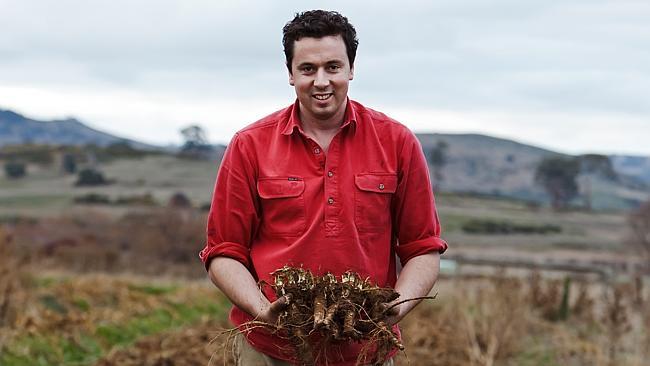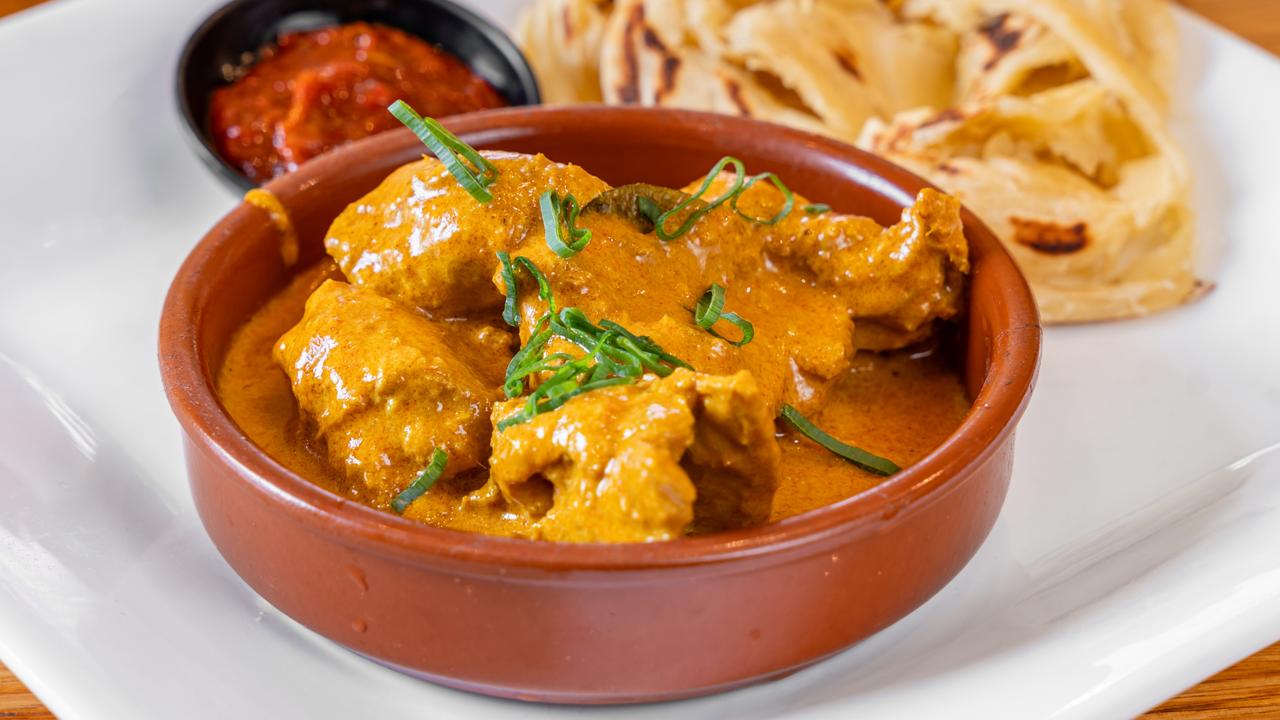Resilience and radishes pave road for Tassie farming success
FARMERS have to be resilient, adaptive and not afraid to put their head on the block and have a go, says farmer Will Bignell.

Food and Wine
Don't miss out on the headlines from Food and Wine. Followed categories will be added to My News.
FARMERS have to be resilient, adaptive and not afraid to put their head on the block and have a go, Will Bignell told a recent forum, Climate Change and the Future of Food.
The scale of activities on the farm Will and his father John Bignell run at Bothwell ranges from a flock of 14,000 sheep to milling flour, which, Will says, is hardly a hobby, “more a bad habit”.
He also works as a scientist, runs a successful drone business and has “done paddock-to-plate”, selling Thorpe Farm’s food at the Taste.
Things he and/or his father have “had a go” at and got out of include growing strawberries, wasabi and garlic, and making goat milk cheese.
When Will talks about niche crops for Tasmania, he does not mean myrtus berries or green tea, he means poppies.
His $250,000 crop of poppies is no boutique enterprise – Tasmanian farmers account for about 65 per cent of the world’s opioid trade.
“This scale of agriculture really gets everyone engaged, the truck drivers, service stations, irrigation guys, farmhands, machinery dealers, power bills, the whole lot,” he says.
“This is the scale of agriculture Tasmania needs.”
For Will, putting your head on the block not only includes thinking laterally on what to grow and taking on a scary-size loan to buy water, but sticking your head over the parapet to speak against popular opinion.
He is, for instance, in favour of the super trawler Geelong Star, and not afraid to say so on Facebook.
Nor does he believe that Instagram farmers are the future.
Will questioned the suggestion in the recent Health Food Access Tasmania Project that selling more local produce within Tasmania could generate jobs and increase farm incomes.
As Will points out, there are 120 people for every farmer in Tasmania and no way half a million people can buy everything those farmers produce.
“This is not the UK, there are not two million people within a 40km radius, it’s 10,000 in a 40km radius — and probably most of them won’t eat what you are growing,” he says.
Backyard gardeners, urban farmers, farmers markets and vegie box schemes play a role in increasing the appreciation of fresh, local food but will not rescue the Tasmanian economy, he says.
Climate adaptation came early to Thorpe Farm, where more than a decade ago they began farming horseradish.
Not only can the winter root vegetable survive a Bothwell winter, but the frosted ground puts added oomph into it.
Like garlic, horseradish exhibits its fiery properties only when it is raw and is cut or grated.
Baked whole it is a mildmannered vegetable.
When it is grated, enzymes in the cell structure attack an oil compound and the reaction releases the heat.
Air fuels the reaction, so for ultimate hotness leave the grated horseradish for a few minutes before stopping the reaction with the addition of cream and/or vinegar.
Bignell likes horseradish with beef and salmon, both traditional uses.
Matt Wilkinson in Mr Wilkinson’s Favourite Vegetables (Murdoch Books) endorses these uses but says horseradish is also “beautiful” with parsnip, and traditionally served with beetroot in Central Europe.
He recommends applying it to carrots and turnips, too.
But horseradish did not get its name because it was fed to horses.
“Hoarse” in old English means coarse and strong, so it’s a radish that is hoarse.
Its French name, raifort means strong root.
Horses may not like horseradish, but sheep do.
Will says they will get into it when it is growing and happily nibble on any that does not make the grade looked for by chefs all over Australia.


